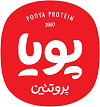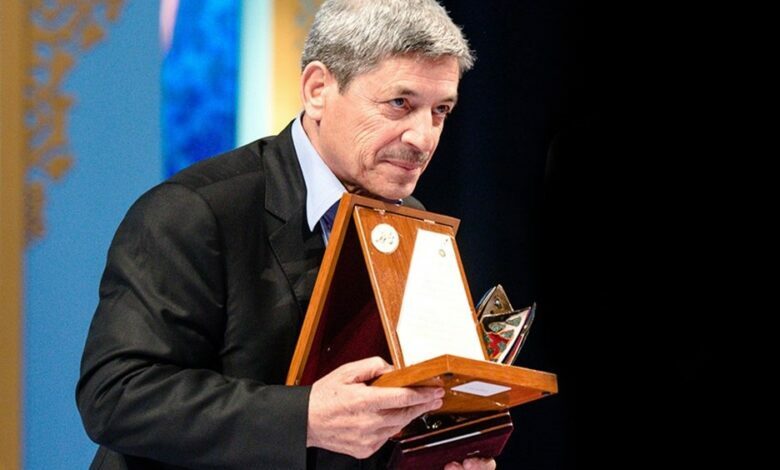The complete biography of Ayoub Payedari, the father of Iran’s ice cream industry and the founder of mihan Dairy Food Industry Complex
Ayoub Payedari, the father of Iran’s ice cream industry, was born in 1335 AD in the village of Kondroud, one of the functions of the Sufian section of the Shabastar city in East Azarbaijan province.
He says in an interview about her childhood: “My family, like other residents of the village, was engaged in gardening and animal husbandry. My childhood was spent on the slopes of the mountain and in a village house! I learned from that time that I have to rely on myself and my abilities and not let the difficult conditions of life determine the fate of my life forever…”
Ayoub Payedari dropped out of school at the age of fifteen and immigrated to Tehran! In Tehran, he started working as a simple worker in the pastry shop of one of her fellow villagers. he says about this: “When I entered Tehran, I started working alongside my fellow villagers; The heavy amount of work I was doing and the pleasure I was getting from earning money, made me not be captured by homesickness! Because this income was my result and it is very pleasant for me.
I’ve always wanted to move on to getting better! For this reason, over time, I continued working in several pastry and ice cream workshops… Although my salary was higher, this was not what I was looking for… ”
It is interesting to know that Ayub Payedari started her activity from her teenage years by selling ice cream with a cart! Today, after many years of hard work, Ayub Payedari has transformed MIhan dairy Food Industry Complex from a small workshop to the largest ice cream and dairy producer in Iran!
he says about her love for ice cream: “My interest in ice cream was formed from childhood! I tried ice cream on one or two trips to the city with my family. At that time, the ice creams were mostly ice and not of high quality; But they were still attractive to a child.
I decided to rent a portable refrigerator from one of the ice cream production workshops! And sell ice cream in the form of a tour in the streets and avenues of the city. “
Ayub Payedari and the story of the beginning of ice cream production
By renting a shop in Islam Shahr, Ayoub Payedari decided to start the production of wooden ice creams on a limited scale and in the form of a workshop in 1354. At that time, things were done manually and the method of producing ice cream in those days was very hard and laborious.
he says about this: “We had to fill the ice cream syrup in molds by hand and then freeze them by placing them in the antifreeze solution and stick them, and then separate the frozen ice creams from the mold by hand and manually We were packing… I felt that the ice creams in the market do not have the necessary quality and variety! I felt that it is possible to offer high-quality products to the market. “
After some time, Ayoub Payedari turned her ice cream shop or small workshop into a larger semi-industrial workshop near the same place! he also sent ice cream to far and near cities with a refrigerated machine! Simple wooden and glass ice creams in two types of milk and fruit and with the familiar flavors of vanilla and chocolate.
He was able to set up the first industrial ice cream factory in Islamshahr area. After a few years, while traveling to Europe and visiting one of the companies producing ice cream machines, Ayoub Payedari asked them to show him new and different ice creams that are produced by extrusion and tunnel freezing. . And this was the beginning of the new innovations of the Mihan dairy brand…
In 1375 AD, after the success she achieved in the field of ice cream production, Ayoub Payedari decided to enter the field of dairy products production as well! He says about this in an interview: “We used fresh milk to make ice cream; During the winter, we could not move this milk… we had to buy milk from them in the winter as well.
Between the years 1375 and 1376, we started the production of sterile milk. This helped us a lot! Due to the production of sterile milk and ice cream, we were able to take a high share in the market. After a while, I felt that we have reached saturation in the production of ice cream and sterile milk; That’s why we established Mehen Dairy City (with an area of 37 hectares) so that we can enter the market with new products and maintain our brand.”
By creating employment for more than 20,000 people and providing the growth and development of the country’s food industry by producing more than 60 types of products, Ayoub Payedari has been able to export the products of the country as a symbol of Iranian production to the world markets! The products of this company include cheese, butter, milk, cream, yogurt, buttermilk, all kinds of ice cream and juice; Also, this company exports to countries such as Iraq, Kuwait, United Arab Emirates, Azerbaijan, Malaysia, Russia, Qatar, Oman, Pakistan and Afghanistan (exports amounting to 50 million dollars).
It is not bad for you to know Mihan, Ghazal Mihan green farming and industry complex consisting of 40,000 dairy cows in an infrastructure of 40 hectares for the production of milk needed by Mihan Dairy Company and also a farm of 250 hectares in the vicinity of the livestock farm for growing fodder plants. Dami has established his own dairy farms in the central province.
In 2016, in the second Amin Al-Zarb awarding ceremony, which was held in the presence of the Minister of Industry, Mines and Trade, and the Minister of Foreign Affairs, as well as private sector activists, the founder and CEO of Mihan Industrial Group, namely Ayub Al-Zarb, was honored as an exemplary entrepreneur. Amin al-Zarb’s plaque, badge and statue were awarded to him!
He says: “I see the Mihan dairy as a tree of light that grows day by day and gives more and more blessings; And every day the number of people who benefit from the shade and fruit of this tree will increase.
My view has always been towards the future; In the past, there have been many hardships that are over and should not be dealt with anymore. But if I go back to the past, I will follow the same path with fewer mistakes and errors. “



